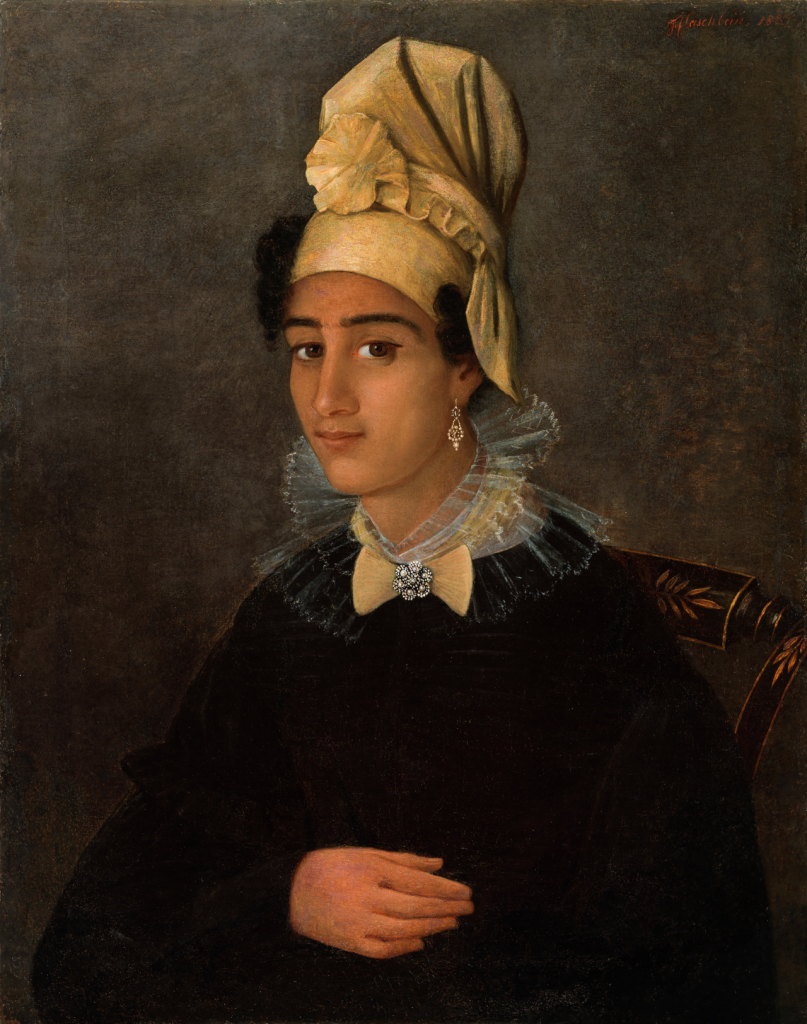This video was created by the New-York Historical Society Teen Leaders in collaboration with the Untold project.
Background
By the time the Spanish took over the Louisiana colony in 1763, there was an established community of free Black people who lived and worked in the territory. The free Black people of Louisiana occupied an undefined position in colonial society. They were not under the control of the laws governing slavery, but they were also denied all the rights and privileges that came with being white.
The Spanish government wanted to more clearly define the place of the free Black community of Louisiana to prevent people of color from becoming too powerful. One major concern was that free Black women were too beautiful, and too many white men were attracted to them. In 1786, the governor of Louisiana proclaimed that all free Black women must wear tignon to make them different from white women. Tignon were head scarves typically worn by enslaved women to keep their hair up while they worked. By requiring free Black women to wear the same hair covering, the governor was marking them as related to enslaved women rather than white women. He was also forcing the women to cover their hair, which was considered one of their most attractive features.
The free Black women of Louisiana were more than up to this challenge. The tignon was widely adopted in accordance with the law, but women used colorful, expensive fabrics and tied them with ornate knots. They also decorated them with feathers and jewels. Instead of being a signal of the inferiority of free Black women, it became a mark of their beauty, wealth, and creativity, a subtle rebellion against a colonial government that wanted to keep them down.
About the Image
In this portrait, we see the beauty and style of the tignon on proud display. The subject of the painting is Betsy, the free Black housekeeper of artist François Fleischben. Historians do not know why the portrait was made. One theory is that Betsy commissioned this portrait. Another is that François admired her style and asked her to sit for him.
This portrait demonstrates not only what the tignon looked like, but that the style long outlived Spanish colonial rule in Louisiana, which ended in 1801. It is a testament to the tignon’s importance as statement of power for free Black women.
Vocabulary
- commission: A formal request to produce a work of art.
- Louisiana: Founded in 1682, this colony was the second North American colony claimed by the French. The territory stretched from the Great Lakes to the Gulf of Mexico, between the Appalachian and Rocky Mountains. It was taken by the Spanish in 1763.
- privilege: A special right granted only to a particular person or group.
- tignon: A cloth wrapping that covered the hair. Free Black women in colonial Louisiana were required to wear tignon beginning in 1786.
Pronunciation
- tignon: TEEN-yon
- François Fleischben: fran-SWA FLYSH-ben
Discussion Questions
- Why did the Spanish government pass laws governing the clothing of free Black women?
- How did free Black women use fashion to fight back against systemic oppression?
- Why is it important to know the history of the tignon? Of fashion generally?
Suggested Activities
- Lesson Plan: In this lesson designed for kindergarten through second grade, students will learn how to study portraits and draw conclusions about people long ago. They will use the portrait of Betsy as a case study.
- Use this image in any lesson about this history of free Black communities.
- Connect this story with the modern debate over natural Black hairstyles in schools—how do contemporary restrictions echo this historical one? What, if anything, has changed?
- New York City banned workplace discrimination based on hair in 2019. Read the New York Times article about this move, and reflect on what this move reveals about common attitude about Black hair in our present day.
- By the early 1800s fashionable white women like Dolley Madison and Marie-Thérèse Bourgeois Chouteau wore tignon. What does this say about the power of this fashion statement? How do students feel about this historic example of cultural appropriation?
- Use this example as a starting point to talk about the power of fashion in public discourse. Invite students to research other historical examples of fashion being used to engage in politics, and to find examples today.
- To learn more about how women were expected to dress to limit the attention of men, read Ornaments of the Daughters of Zion.
- Use the following resources to explore the complicated social milieu of the North American French colonies:Education in New France, Women and the Code Noir, Marrying into the New World, Life Story: Kateri Takakwitha, The Casket Girls, Purity of Blood, Life Story: Marie-Thérèse Bourgeois Chouteau, and Life Story: Mother Esther Marie-Joseph Wheelwright de l’Enfant.
- Many mixed-race people were born in the North American colonies. Combine this image with any of the following resources to learn more about the origins and experiences of this group of people: Purity of Blood, Settling Russian Alaska, Runaway Slaves, Legislating Reproduction and Racial Difference, Life Story: Malitzen (La Malinche), Education in New France, Women and the Code Noir, Instructions for the New World, Life Story: Marguerite Faffart, Life Story: Nansi Wiggins, and Life Story: Toypurina.
Themes
AMERICAN CULTURE; DOMESTICITY AND FAMILY







